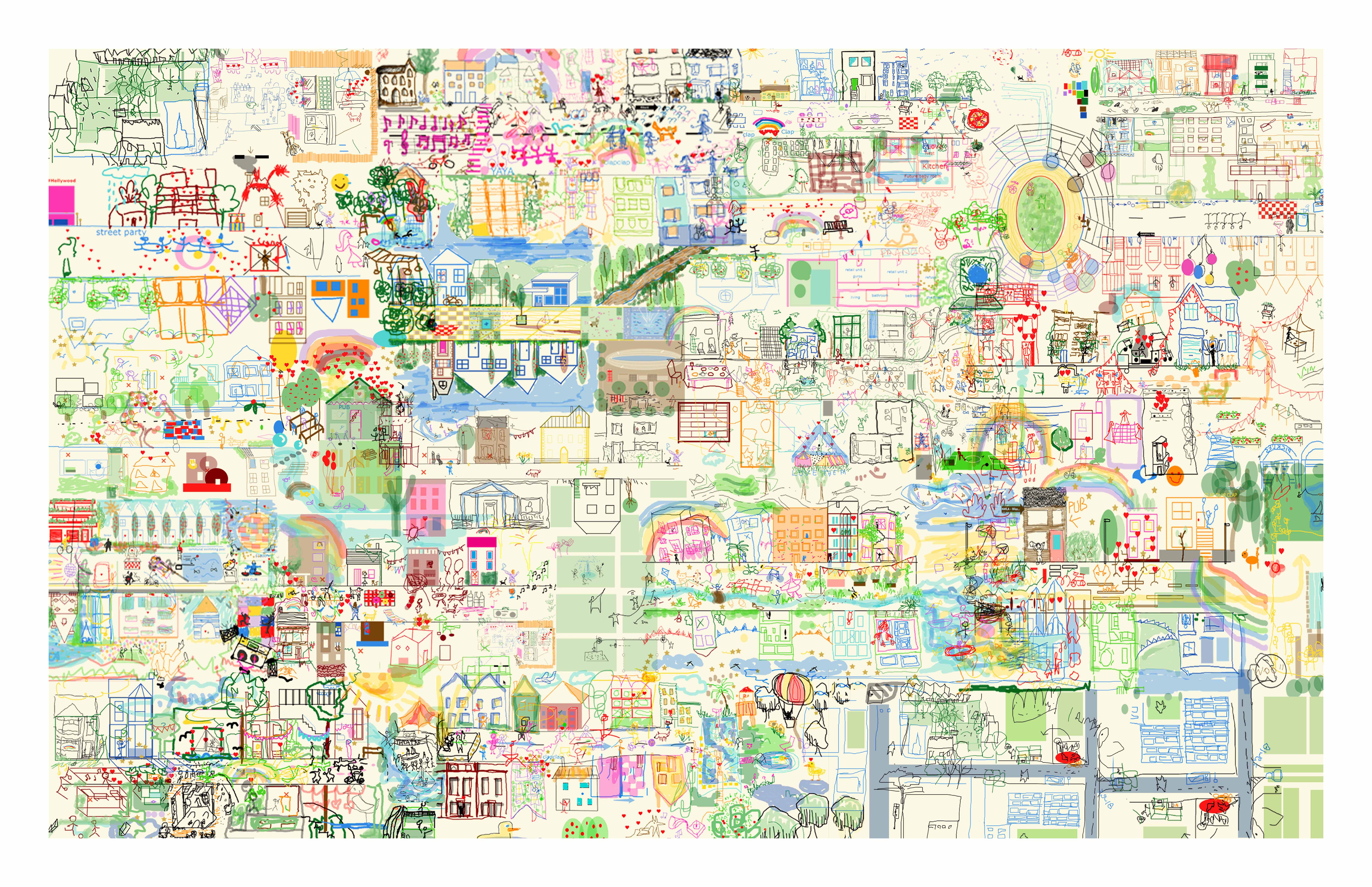OPEN HOUSE
SEPTEMBER 2020
Two of our projects will be taking part in this year’s Open House. Our Stirling Prize shortlisted social housing scheme, Darbishire Place in Whitechapel, and the London Academy of Music and Dramatic Art, will be opening their doors with architect led tours on the 21st September. Open House London is the world’s largest architecture festival, giving free public access to 800+ buildings, walks, talks and tours over one weekend in September.
FROM WORKSHOP TO SITE
SEPTEMBER 2020
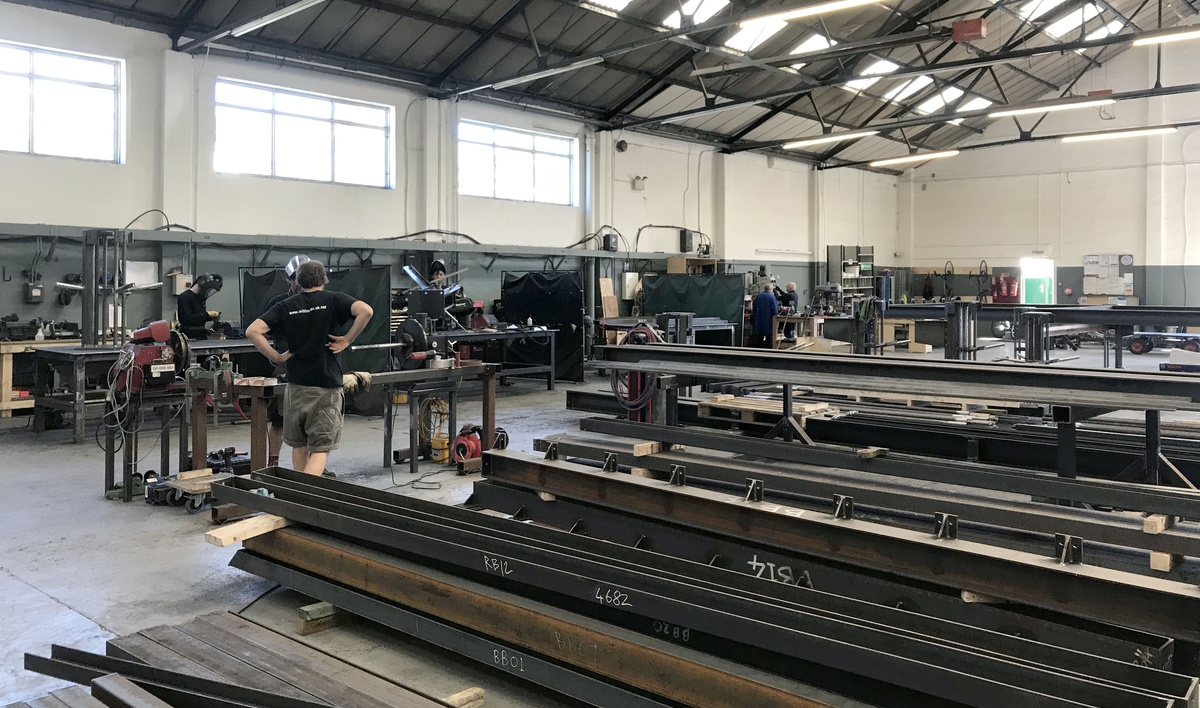
At Millimetre’s workshop in Brighton, a tremendous steel skeleton has been rapidly emerging. It will form the delicate superstructure of a garden pavilion-cum-guesthouse destined for the Isle of Wight. In the main hangar, a healthy collection of gently oxidizing off-the-shelf steel sections and staggeringly sharp, bespoke milled elements is set back from a row of socially-distanced workspaces. Millimetre’s metal workers have been working around the clock (and in the excessive summer heat) to cut, weld and grind the heap in front of them into the many precise modular components that will form the pavilion’s columns, floor and roof. An assembly line has been formed to increase the efficiency of fabrication, with a station each for repetitive rotary welding tasks, rotary grinding, welding using custom jigs and more complicated non-linear welds. As the steel passes through the workshop, glistening segments come to form elaborate sculptures. Adjacent to the metalworking bays is a six-axis robot arm programmed to cut high density foam into jigs for the most intricate welding alignments. This will be essential to the success of the central roof truss node, where nine tubular sections converge. More on this will follow at a later date.

The pavilion will be lifted off the ground by cantilevering trusses held from the main columns, which are formed of four tubular sections tied together by intermittent thin plates along their height. The lower portions of these columns, which sit beneath the floor build-up, are amicably referred to as the daleks. These stub columns are the first pieces to be finalized, quickly assembled in tandem to confirm tolerances, and sent away to be painted for corrosion protection before arriving to site.

On the northeast coast of the Isle of Wight, the site falls to overlook a protected marshland with tidal flows fed by the Solent. A shallow depression with raking banks at the bottom of the hill will conceal the feet of the pavilion superstructure; the baseplates of the stub columns now erected atop the long strip foundations and adjoined to form the triangulated support for the floor and deck above. Located to capture rainwater dropping from the overhanging roof eaves, the perimeter gravel drain will also mark the boundary between building and landscape, with tall, wild grasses merging with the wetland beyond..

As the pavilion envelope will be formed largely of full-width glass spans closely abutting the columns, erecting the steel frame precisely is critical. Despite a remarkable installation tolerance of +/- 3mm diagonally across each 5 x 5m bay, the stub columns must be shimmed to ensure exact alignment and verticality. Between them, the galvanised (and thus silvery) internal floor beams are distinguishable from the external floor beams, which are coated to resist corrosion and painted to achieve a warm metallic finish. With the cantilevering terrace beams installed additionally, a datum is formed approximately 180mm below the intended finished floor level from which the remainder of the pavilion will rise..

Back in Brighton, the columns which will stand on the shoulders of the stubs now installed on site are laid out one by one. Their height and slenderness astound – a true feat for the structural engineers, Smith & Wallwork. It is through, not around these columns that the thermal envelope will run, with tall and narrow glazing centred on each column between the four vertical tubes. The next test-build will involve hoisting up these columns, narrowly missing the suspended lights of the workshop, to bolt on the roof trusses via the halving joints rigidly reaching out to receive them. That dramatic and exciting update will have to follow.

DRAWING TOGETHER
SEPTEMBER 2020
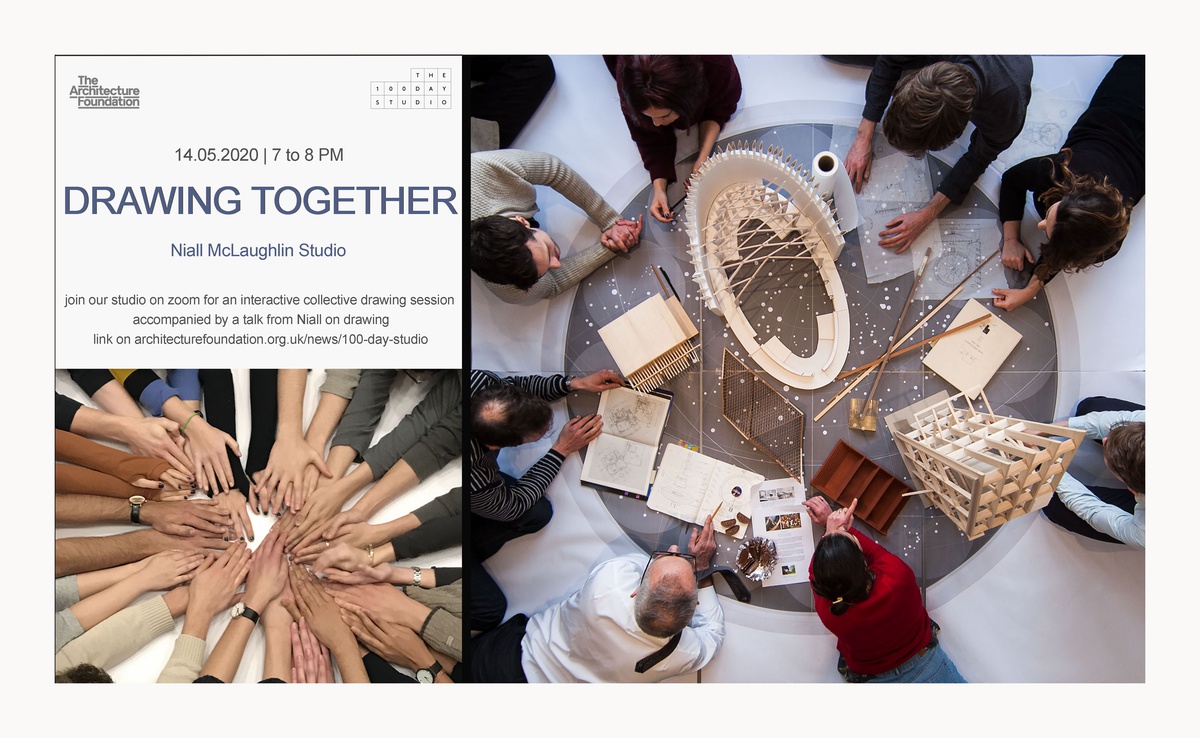
“Boccaccio’s fourteenth century classic the Decameron takes the form of 100 tales told by a group of young people who have retreated to a villa while waiting for their native Florence to escape the grip of the Black Death”.
The 100 Day Studio is an initiative started by The Architecture Foundation that adapts Boccaccio’s 14th century classic the Decameron into a series of Zoom lectures. Our studio was invited to host a lecture on Day 26.
Our office has a long-standing tradition of drawing together. From the plaster floor drawing we made of the Bishop Edward King Chapel, to the collective drawings for the “Losing Myself” installation at the Venice Biennale, the studio’s practice of collaborative draughtsmanship has always been a sociable activity, materialising our thoughts in a way that would not be possible individually. Starting from a roll of tracing paper, drawing together becomes the medium through which we relate and converse. During a recent online studio discussion on the relationship between memory and space, we started sketching our office as we remembered it. We drew it together with Niall using the Zoom Whiteboard whilst recounting memories of the space we once shared. The drawing started to become collaborative, as each colour represented a different person’s drawing. We realised that through using this technology, there was the opportunity to share our collective drawing tradition with a wider audience. We decided to host an interactive drawing session for our 100 Day Studio lecture, hoping to illustrate the sense of community through audience participation during this period of isolation.
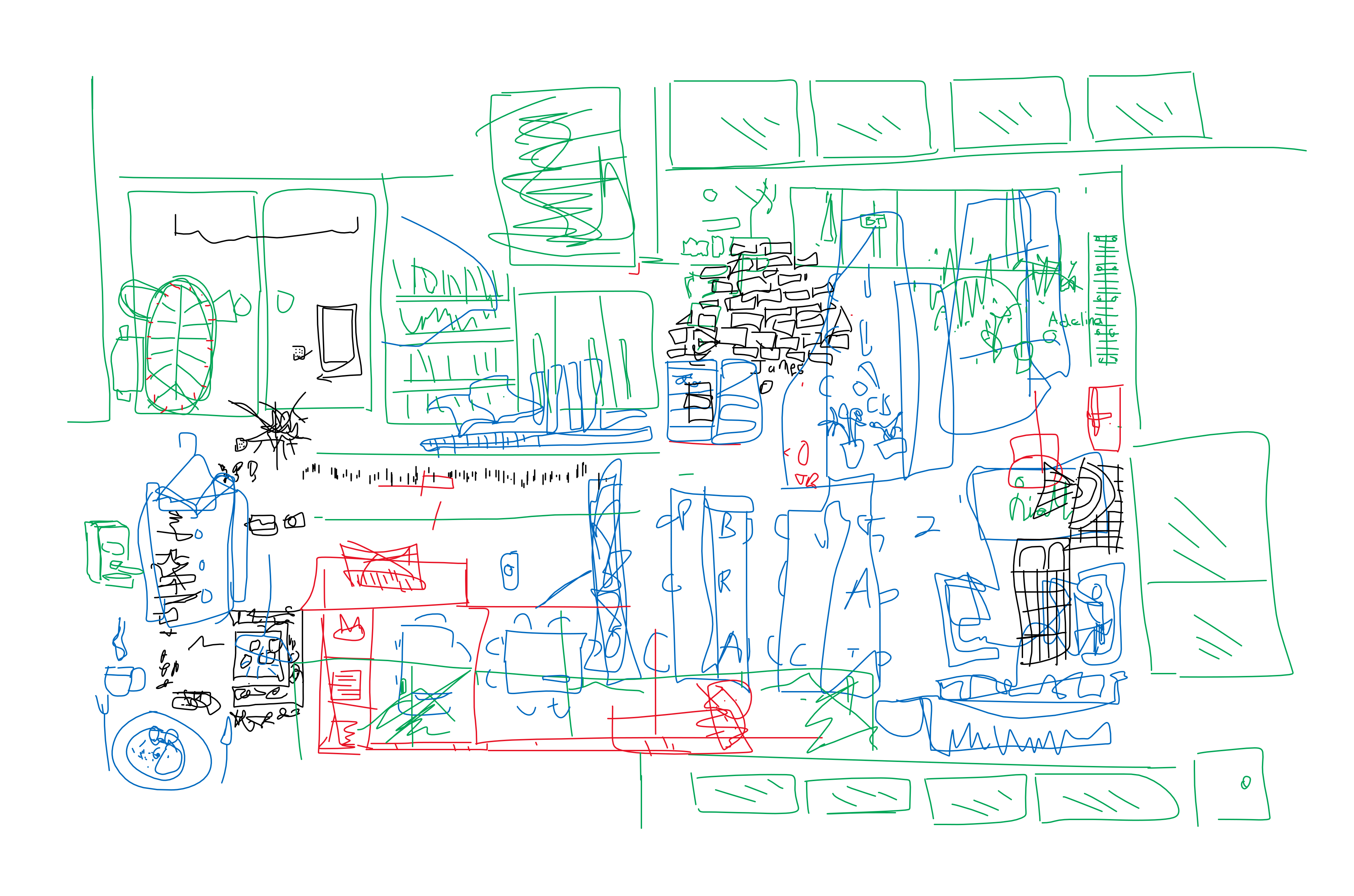
The move to working through remote digital media has been an experiment for us on its own: how could we choreograph this drawing exercise with hundreds of participants communicating with each other in real time? After hosting a few digital drawing sessions in our studio, the importance of designing a framework that would produce a cohesive collective drawing while still allowing for individual creative expression became apparent. Since the lecture would be taking place on a Thursday and finishing in time for the weekly 8pm Clap for Carers event in the UK, our narrative recognised our shared lockdown experience and appreciation for our health workers.
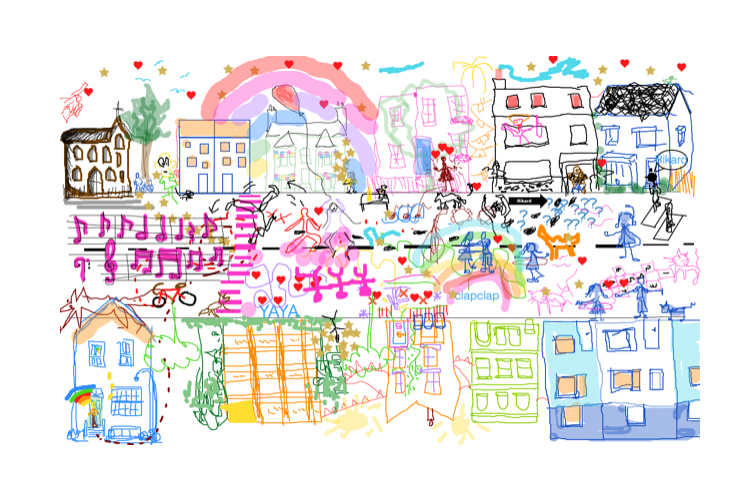
There were around 300 people taking part in the collective drawing session, which was co-hosted by everyone from our studio. The participants were asked to draw their own house with themselves at a window. Then, they were asked to imagine putting on their shoes, go outside, and join one another in front of the house to clap for NHS and carers. They were invited to draw themselves hosting a street party in their neighbourhood when the lockdown is over. Very quickly, we saw each one of the whiteboards being filled with trees, flowers, picnic blankets and delicious pastries. The hosts then invited the audience to take a virtual walk down the street and design a public space together. It could be anything from a communal garden to a public swimming pool; from allotments to an athletics track; from a market to a pub, etc. It was great to talk about the variety of activities people looked forward to doing again.
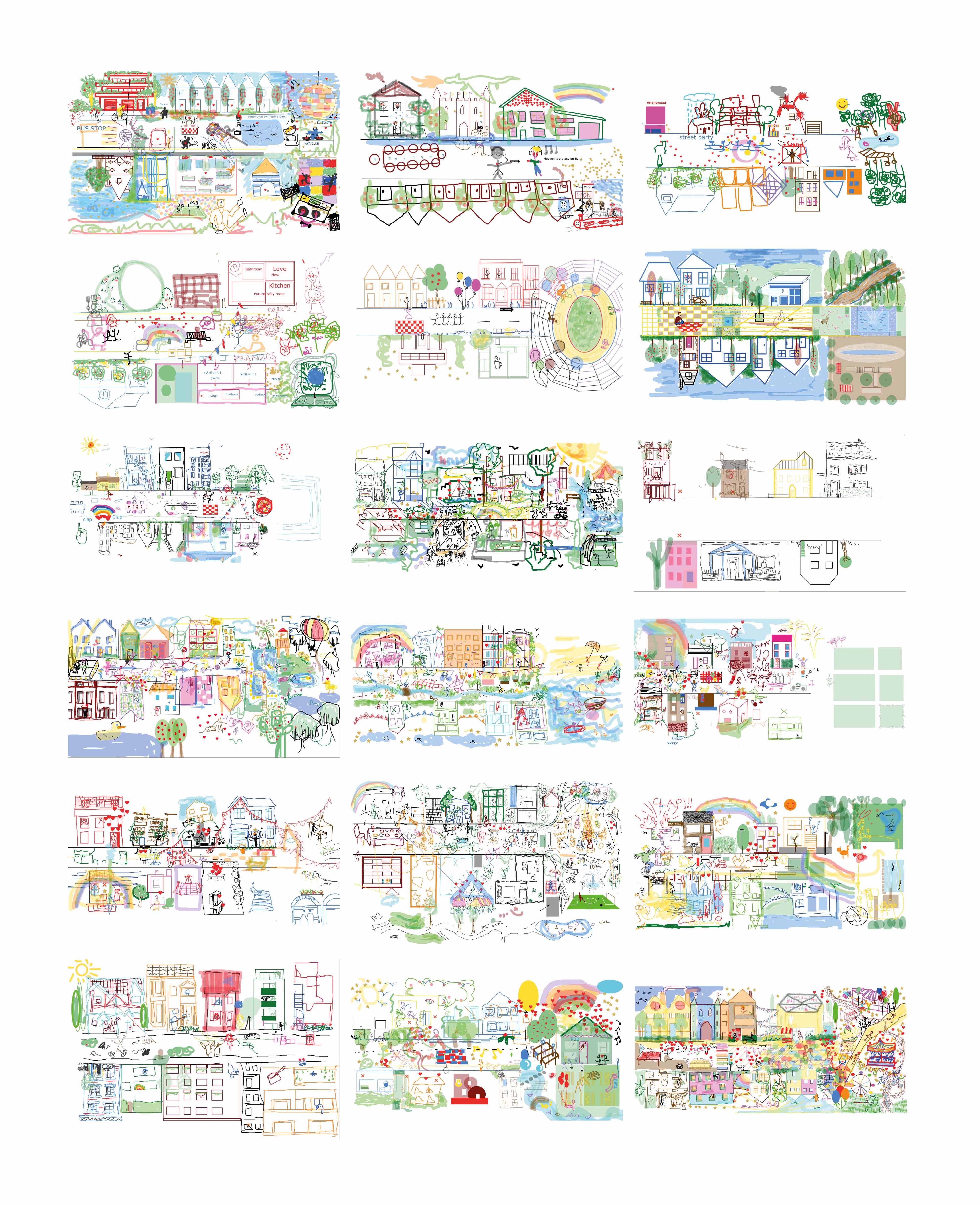
It was a one hour event. The collective drawing took 25 minutes in 20 breakout whiteboard rooms. The final composition was assembled from 20 fragments in 25 minutes while Niall gave a talk. It was completed just in time for the weekly 8pm Clap for Carers event in the UK. The collective drawing was revealed alongside a soundtrack by the composer Kevin Polland, mixing our own clapping with live sounds coming in from the street. We recognise this particular beautiful assembly of sketches is just one of many possible outcomes, reflecting the unpredictability produced by the structure of this exercise. This drawing is not a finished artefact, but rather a never-ending work-in-progress. We look forward to weaving the next tapestry!
